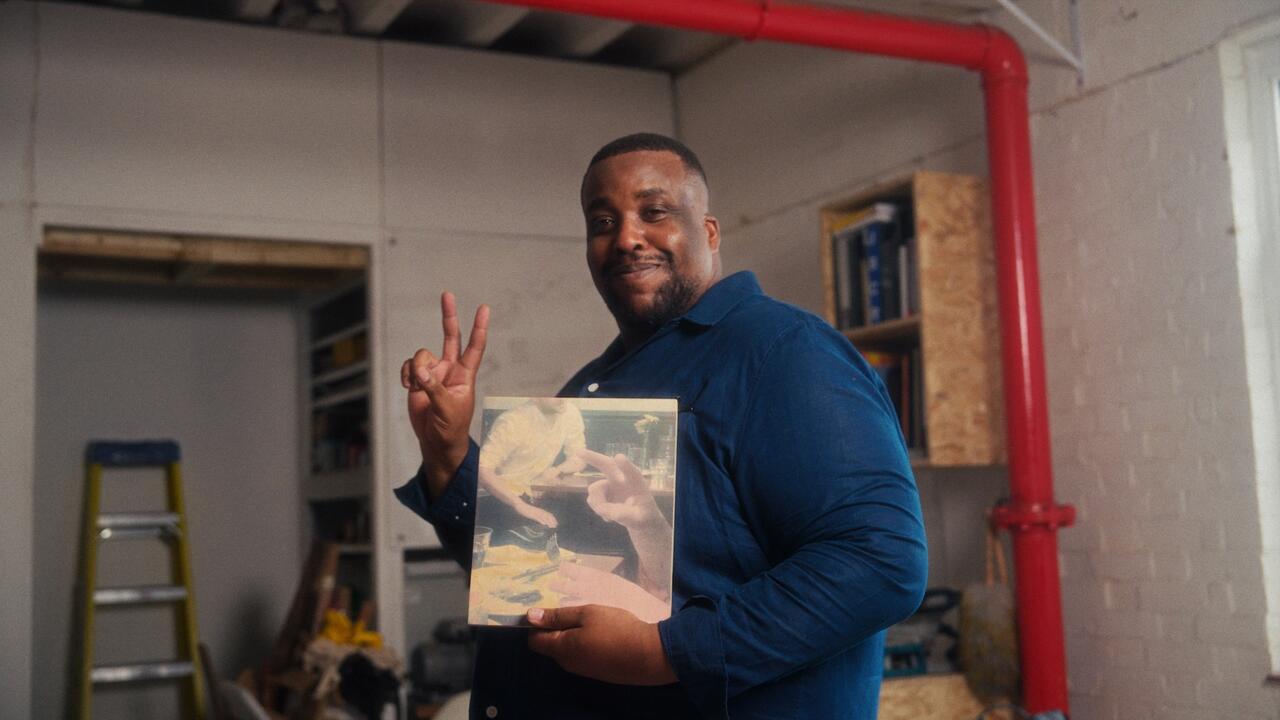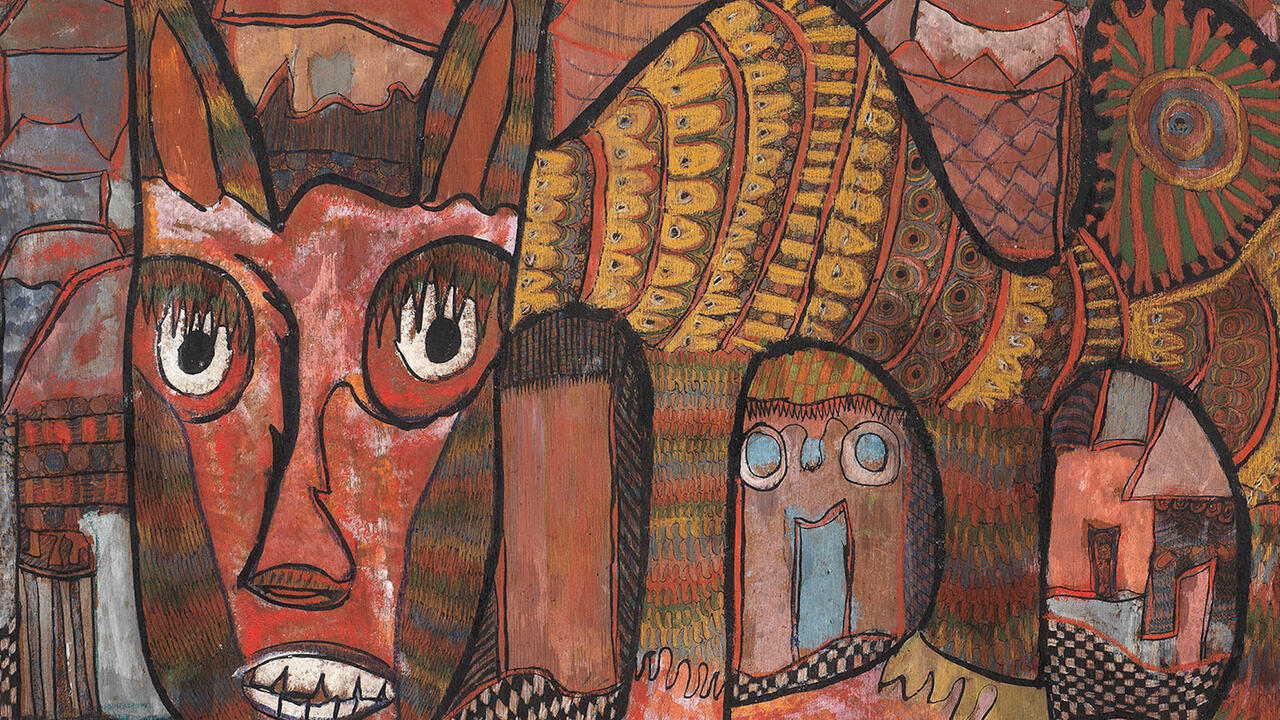Soft Résistance
The exhibition title 'Soft Résistance' was sprayed across the facade of the gallery entrance on Torstrasse, a grimy through road for trucks in East Berlin that follows a line of fortifications which have long since disappeared. In a city covered in scars from bitter ideological battles, the graffiti operated like a kind of non-specific call to every passer-by, but for what and why? Inside the gallery seven French artists presented no obvious unified front, although each of them will be making a work in a public space in Berlin over the next few months. At one end of the spectrum of work - which ranges from the obscene to the witty - is Philippe Meste. Hanging on a door were two ordinary shoulder bags Gunbag Power 8 (Technics) and Gunbag (Camouflage) (both 1999) fitted with five live rockets. The video Poste Militaire (1994-97) involved the artist meeting fire with fire in an assault on an aircraft carrier using a self-designed boat, a kind of crazed parody of military machismo. On the walls were his revolting Watercolours (1995-99) - fashion magazine cut -outs which the artist defaced with his sperm - which were complemented by a crouching hard plastic female body shell entitled Le Sexe Moderne 2 (1999), an apparatus which exposes the commonly agreed erogenous zones of its hapless victim. This kind of testosterone storm made you glad Meste is an artist not a politician.
Relief was around the corner in the form of Joel Bartoloméo's captivating video about voyeurism and seduction, La fille à la robe rouge (Kiss me my darling) (1998). Most of the frame is filled by a back view of the head and shoulders of a 30-something guy at the party of a provincial French wedding. Elvis croons in the background while a woman in a 50s-style dress approaches, crouches down and makes hesitant eye contact with the man. He takes a drag of his cigarette (great for giving away a desire to consume while placing a protective burning ember between you and a potential lover) and the woman in the red dress gets up and walks away. It's impossible to know if this is a beginning or an end. Although the sequence is taken from life - it's his friends celebrating - the protagonists seem filmic, the result of Bartoloméo's careful eye.
Three of the artists work with either portraiture or representations of the self. Rébecca Bournigault's Portraits 15 Minutes (1995) is a collection of videotapes of friends and acquaintances doing ordinary things. There were a few familiar artist's names on the tapes, but M. Le Dauphin seemed as good a place to start as any. He turned out to be an agreeable looking art collector with a stylish moustache in a red room filled with gilt frames. Serge Comte's tessellated Post-It note digital printout Lilith (1996) - named after the mythical first woman - combines his own face with that of a porn artist taken from the Internet. But amongst his output of low budget pop afterglow videos, sound recordings and paper works, most charming was Serge le Geyser (1997), a discreet, tiny star-spraying video projection - a magical presence, like a sweet, invisible essence.
Matthieu Laurette's Apparitions (Selection 93-95) documents his systematic attendance and participation in hyper-ridiculous talk/game shows. Everywhere you look there he is again, whether as a young multi-media artist looking for love, a hermit who likes to film himself, or an expert refund seeker. Also media fascinated was Alain Declercq's Feed/Microphone (1999), a nest of microphones on a broad desk and a row of big speakers behind it that amplifies and repeats any old noise into a growing feedback - a distortion which mimics those created by all closed systems of media and power.
Bojan Sarcevic built Coin du monde (Corner of the world, 1999) - a corner cut from an anonymous Amsterdam apartment - into the corner of the gallery. Maybe it's this kind of tension between adaptation and displacement that constitutes a kind of 'soft resistance' - more about refractory pondering than pragmatic acting.
















